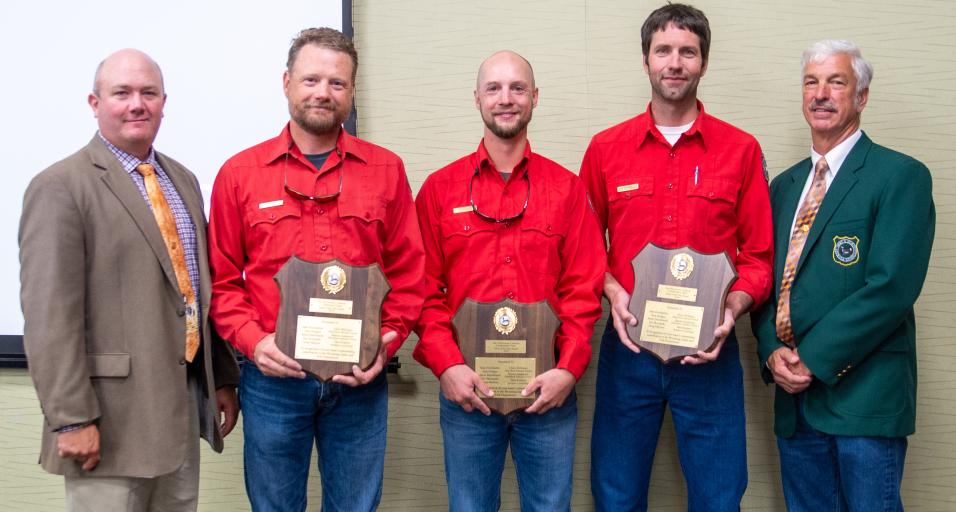When Cody regional fisheries managers began thinking about the future of the Yellowstone cutthroat trout in the Bighorn Basin, they didn’t start with a project proposal. Instead, the region asked the public one driving question, “When you consider the future of cutthroat trout in the Bighorn Basin what challenges, both social and biological, do we need to consider to ensure all interests are met?” That question was the basis of success with writing a collaborative plan to conserve the species in the future, and it earned the team the 2019 U.S. Forest Service Rise to the Future Award for Public Awareness.
Sam Hochhalter, Jason Burckhardt, Joe Skorupski and Tara Hodges of the Wyoming Game and Fish Department, working with the Bighorn and Shoshone National Forests, were recognized formally in June for their outstanding contributions to communicating the aquatic resource or watershed stewardship management.
“Within our agency, we know the excellent work our employees do; however, it is an honor when they are recognized nationally for their work,” said Alan Osterland, Game and Fish chief of fisheries.
Dubbed the Cutthroat Trout Collaborative, the year-long relationship-building and planning process between the public, Game and Fish and the Bighorn and Shoshone National Forests, built on the lessons of former reintroduction projects in Cody; success for the future of the fish relied on the public’s support for the project.
“The collaborative was the marriage between social concerns and public interest and desires with our biology and science,” said Hochhalter, Cody regional fisheries supervisor. “The outcome was a balance between restoration and serving the public, and that included the public’s ideas in decision making.”
The regional staff built public momentum for the initiative with three sets of meetings throughout the region, supported by emails, radio talk show programs, various print and social media communication, posters, website content and in-person meetings with stakeholders. The collaborative process resulted in creating a work plan with strong, diverse stakeholder support that guides 15 to 20 years of Yellowstone cutthroat trout restoration work for the Cody region.
“To receive recognition for the collaborative process is a huge honor,” Hochhalter said. “We are all super dedicated to our mission and our jobs, and when people acknowledge that, especially on the national scale, we feel proud.”
Hochhalter emphasized the driving force behind success, though, was the public’s dedication.
“This was a huge ask of the public, and without their participation and willingness to take time out of their lives to help us, it wouldn’t have been the success it was,” Hochhalter said. “But this is a testament to the public and their engagement.”
For those interested in reviewing the public process and reading the final recommendations, visit the Cody Region Cutthroat Trout Collaborative website.
Cody Cutthroat Trout Collaborative a model for public engagement
Sara DiRienzo (307-777-4540)


